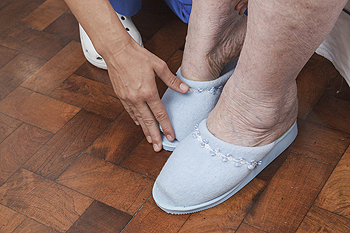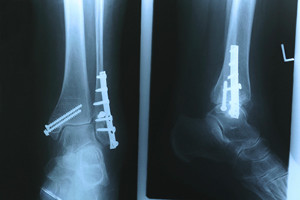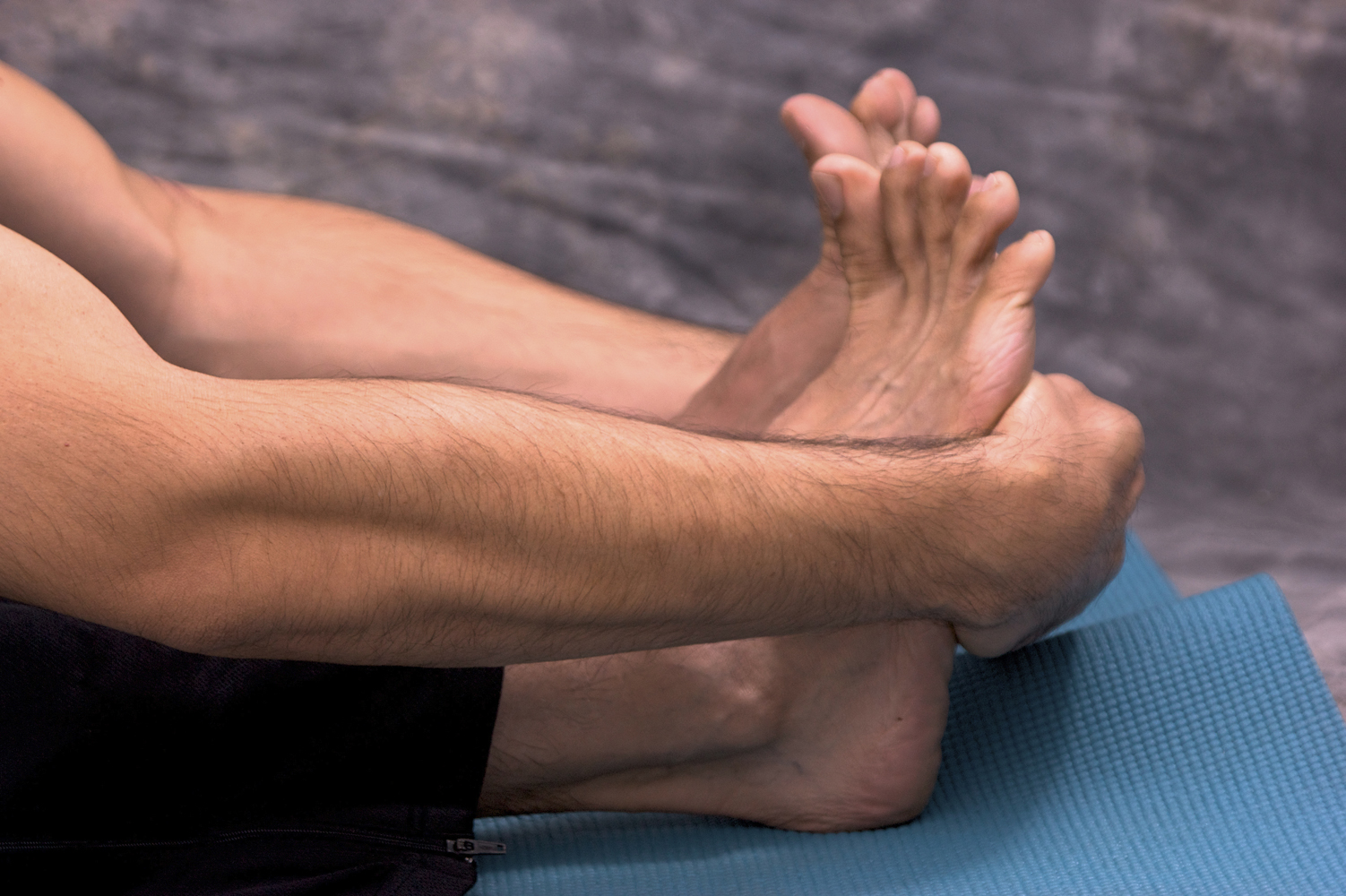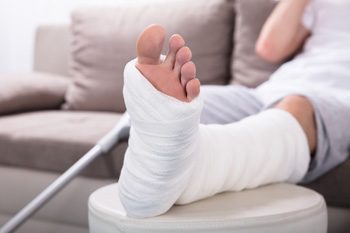Items filtered by date: March 2021
The Kitchen Area May Cause Falling
 A common place for patients who are 65 or older to fall can be in the kitchen. This can happen as a result of having slippery floors or trying to retrieve items in places that are hard to reach. It may be beneficial to frequently sit in a sturdy chair while preparing foods, as this may help to maintain balance. Having a non-skid rug in front of the sink may help to prevent falling, and it is suggested that sturdy shoes are worn while in the living environment. It is common for spills to occur, and greasy or sticky foods may cause accidents in the kitchen. If you would like additional information about how falling in the kitchen can affect the feet, please confer with a podiatrist who can offer you effective preventive methods.
A common place for patients who are 65 or older to fall can be in the kitchen. This can happen as a result of having slippery floors or trying to retrieve items in places that are hard to reach. It may be beneficial to frequently sit in a sturdy chair while preparing foods, as this may help to maintain balance. Having a non-skid rug in front of the sink may help to prevent falling, and it is suggested that sturdy shoes are worn while in the living environment. It is common for spills to occur, and greasy or sticky foods may cause accidents in the kitchen. If you would like additional information about how falling in the kitchen can affect the feet, please confer with a podiatrist who can offer you effective preventive methods.
Preventing falls among the elderly is very important. If you are older and have fallen or fear that you are prone to falling, consult with Mark Hupart, DPM from Southside Podiatry . Our doctor will assess your condition and provide you with quality advice and care.
Every 11 seconds, an elderly American is being treated in an emergency room for a fall related injury. Falls are the leading cause of head and hip injuries for those 65 and older. Due to decreases in strength, balance, senses, and lack of awareness, elderly persons are very susceptible to falling. Thankfully, there are a number of things older persons can do to prevent falls.
How to Prevent Falls
Some effective methods that older persons can do to prevent falls include:
- Enrolling in strength and balance exercise program to increase balance and strength
- Periodically having your sight and hearing checked
- Discuss any medications you have with a doctor to see if it increases the risk of falling
- Clearing the house of falling hazards and installing devices like grab bars and railings
- Utilizing a walker or cane
- Wearing shoes that provide good support and cushioning
- Talking to family members about falling and increasing awareness
Falling can be a traumatic and embarrassing experience for elderly persons; this can make them less willing to leave the house, and less willing to talk to someone about their fears of falling. Doing such things, however, will increase the likelihood of tripping or losing one’s balance. Knowing the causes of falling and how to prevent them is the best way to mitigate the risk of serious injury.
If you have any questions, please feel free to contact our office located in Brooklyn, NY . We offer the newest diagnostic and treatment technologies for all your foot care needs.
Read more about Falls PreventionExternal Fixation for Ankle Fractures
 A broken ankle sometimes requires surgery to fully heal. One method of ankle fracture surgery is external fixation. This surgery is done when the fractured bones are not in their normal positions, are broken into several pieces, or are sticking out through the skin. In an external fixation surgery, pins and other devices sticking out of the ankle hold together the broken pieces of bones within the ankle while they heal. You will likely need to avoid physical activity for a period of months while the bones heal. You may require antibiotics, pain medications, and physical therapy following the surgery to prevent infections, reduce pain, and speed recovery. For more information about ankle fractures, please consult with a podiatrist.
A broken ankle sometimes requires surgery to fully heal. One method of ankle fracture surgery is external fixation. This surgery is done when the fractured bones are not in their normal positions, are broken into several pieces, or are sticking out through the skin. In an external fixation surgery, pins and other devices sticking out of the ankle hold together the broken pieces of bones within the ankle while they heal. You will likely need to avoid physical activity for a period of months while the bones heal. You may require antibiotics, pain medications, and physical therapy following the surgery to prevent infections, reduce pain, and speed recovery. For more information about ankle fractures, please consult with a podiatrist.
Broken ankles need immediate treatment. If you are seeking treatment, contact Mark Hupart, DPM from Southside Podiatry . Our doctor can provide the care you need to keep you pain-free and on your feet.
Broken Ankles
A broken ankle is experienced when a person fractures their tibia or fibula in the lower leg and ankle area. Both of these bones are attached at the bottom of the leg and combine to form what we know to be our ankle.
When a physician is referring to a break of the ankle, he or she is usually referring to a break in the area where the tibia and fibula are joined to create our ankle joint. Ankles are more prone to fractures because the ankle is an area that suffers a lot of pressure and stress. There are some obvious signs when a person experiences a fractured ankle, and the following symptoms may be present.
Symptoms of a Fractured Ankle
- Excessive pain when the area is touched or when any pressure is placed on the ankle
- Swelling around the area
- Bruising of the area
- Area appears to be deformed
If you suspect an ankle fracture, it is recommended to seek treatment as soon as possible. The sooner you have your podiatrist diagnose the fracture, the quicker you’ll be on the way towards recovery.
If you have any questions, please feel free to contact our office located in Brooklyn, NY . We offer the newest diagnostic and treatment technologies for all your foot care needs.
Read more about All About Broken AnkleWhat You Should Do While Recovering from an Ankle Fracture
 Ankle fractures can vary from hairline cracks to shattered bones. Depending upon the nature and severity of the injury, a full recovery may take months. As experts in ankle and foot health, a podiatrist can diagnose and treat your ankle fracture with a specific treatment plan—and there are things you can do to aid the healing process while keeping yourself safe. Keep a list of any medications that have been prescribed to you, always take them as directed, and check with your doctor first before taking any over-the-counter medicine. To reduce swelling, use pillows to elevate your leg above your heart, and see if your doctor thinks moving your toes around may help. If you are wearing a cast or splint, keep it dry and never try to remove it yourself. If your toes become numb, you experience new or worsening pain, or your foot changes color, call your podiatrist immediately. Working with your podiatrist will help you get back on your feet as quickly and safely as possible.
Ankle fractures can vary from hairline cracks to shattered bones. Depending upon the nature and severity of the injury, a full recovery may take months. As experts in ankle and foot health, a podiatrist can diagnose and treat your ankle fracture with a specific treatment plan—and there are things you can do to aid the healing process while keeping yourself safe. Keep a list of any medications that have been prescribed to you, always take them as directed, and check with your doctor first before taking any over-the-counter medicine. To reduce swelling, use pillows to elevate your leg above your heart, and see if your doctor thinks moving your toes around may help. If you are wearing a cast or splint, keep it dry and never try to remove it yourself. If your toes become numb, you experience new or worsening pain, or your foot changes color, call your podiatrist immediately. Working with your podiatrist will help you get back on your feet as quickly and safely as possible.
Foot and ankle trauma is common among athletes and the elderly. If you have concerns that you may have experienced trauma to the foot and ankle, consult with Mark Hupart, DPM from Southside Podiatry . Our doctor will assess your condition and provide you with quality foot and ankle treatment.
Foot and ankle trauma cover a range of injuries all over the foot; common injuries include:
- Broken bones
- Muscle strains
- Injuries to the tendons and ligaments
- Stress fractures
Symptoms
Symptoms of foot and ankle injuries vary depending on the injury, but more common ones include:
- Bruising
- Inflammation/ Swelling
- Pain
Diagnosis
To properly diagnose the exact type of injury, podiatrists will conduct a number of different tests. Some of these include sensation and visual tests, X-rays, and MRIs. Medical and family histories will also be taken into account.
Treatment
Once the injury has been diagnosed, the podiatrist can than offer the best treatment options for you. In less severe cases, rest and keeping pressure off the foot may be all that’s necessary. Orthotics, such as a specially made shoes, or immobilization devices, like splints or casts, may be deemed necessary. Finally, if the injury is severe enough, surgery may be necessary.
If you have any questions, please feel free to contact our office located in Brooklyn, NY . We offer the newest diagnostic and treatment technologies for all your foot care needs.
Read more about Foot and Ankle FracturesWhy Live with Pain and Numbness in Your Feet?
Single-Leg Heel Raises
 Did you know that stretching your feet and ankles is a great way to help maintain their overall health? A single-leg heel raise is an exercise which can stretch and strengthen the feet and ankles. To do this exercise, stand in front of a counter or wall and hold it for balance. Lift one foot, placing your full weight on the other foot. Rise up on your toes, lifting your heel off the ground. Then, slowly lower your heel until it touches the ground again. Repeat this exercise 10 times on each leg. Avoid bouncing on the balls of your feet while doing this exercise and stop if you begin to feel pain. For more information about exercises for your feet and ankles, consult with a podiatrist.
Did you know that stretching your feet and ankles is a great way to help maintain their overall health? A single-leg heel raise is an exercise which can stretch and strengthen the feet and ankles. To do this exercise, stand in front of a counter or wall and hold it for balance. Lift one foot, placing your full weight on the other foot. Rise up on your toes, lifting your heel off the ground. Then, slowly lower your heel until it touches the ground again. Repeat this exercise 10 times on each leg. Avoid bouncing on the balls of your feet while doing this exercise and stop if you begin to feel pain. For more information about exercises for your feet and ankles, consult with a podiatrist.
Stretching the feet is a great way to prevent injuries. If you have any concerns with your feet consult with Mark Hupart, DPM from Southside Podiatry . Our doctor will assess your condition and provide you with quality foot and ankle treatment.
Stretching the Feet
Being the backbone of the body, the feet carry your entire weight and can easily become overexerted, causing cramps and pain. As with any body part, stretching your feet can serve many benefits. From increasing flexibility to even providing some pain relief, be sure to give your feet a stretch from time to time. This is especially important for athletes or anyone performing aerobic exercises, but anyone experiencing foot pain or is on their feet constantly should also engage in this practice.
Great ways to stretch your feet:
- Crossing one leg over the others and carefully pull your toes back. Do 10-20 repetitions and repeat the process for each foot
- Face a wall with your arms out and hands flat against the wall. Step back with one foot and keep it flat on the floor while moving the other leg forward. Lean towards the wall until you feel a stretch. Hold for 30 seconds and perform 10 repetitions for each foot
- Be sure not to overextend or push your limbs too hard or you could risk pulling or straining your muscle
Individuals who tend to their feet by regular stretching every day should be able to minimize foot pain and prevent new problems from arising.
If you have any questions, please feel free to contact our office located in Brooklyn, NY . We offer the newest diagnostic and treatment technologies for all your foot care needs.
Read more about How to Stretch Your FeetIs My Foot Sprained or Broken?
 Sometimes it can be difficult to tell the difference between a sprain and a foot fracture. Both injuries have very similar symptoms, including pain, swelling, and bruising. A fracture will often be so painful that you may not be able to walk. Sprains can also make walking difficult, depending on the severity of the injury. At the time that you injure your foot, you may hear a noise. A popping sound can indicate a sprain, while a cracking sound can indicate a fracture. Treatments for the two conditions are different, so it is important to get a proper diagnosis. If you have injured your foot, it is suggested that you see a podiatrist as soon as possible.
Sometimes it can be difficult to tell the difference between a sprain and a foot fracture. Both injuries have very similar symptoms, including pain, swelling, and bruising. A fracture will often be so painful that you may not be able to walk. Sprains can also make walking difficult, depending on the severity of the injury. At the time that you injure your foot, you may hear a noise. A popping sound can indicate a sprain, while a cracking sound can indicate a fracture. Treatments for the two conditions are different, so it is important to get a proper diagnosis. If you have injured your foot, it is suggested that you see a podiatrist as soon as possible.
A broken foot requires immediate medical attention and treatment. If you need your feet checked, contact Mark Hupart, DPM from Southside Podiatry . Our doctor can provide the care you need to keep you pain-free and on your feet.
Broken Foot Causes, Symptoms, and Treatment
A broken foot is caused by one of the bones in the foot typically breaking when bended, crushed, or stretched beyond its natural capabilities. Usually the location of the fracture indicates how the break occurred, whether it was through an object, fall, or any other type of injury.
Common Symptoms of Broken Feet:
- Bruising
- Pain
- Redness
- Swelling
- Blue in color
- Numbness
- Cold
- Misshapen
- Cuts
- Deformities
Those that suspect they have a broken foot shoot seek urgent medical attention where a medical professional could diagnose the severity.
Treatment for broken bones varies depending on the cause, severity and location. Some will require the use of splints, casts or crutches while others could even involve surgery to repair the broken bones. Personal care includes the use of ice and keeping the foot stabilized and elevated.
If you have any questions please feel free to contact our office located in Brooklyn, NY . We offer the newest diagnostic and treatment technologies for all your foot and ankle needs.
Read more about Causes, Symptoms, and Treatment for a Broken Foot
